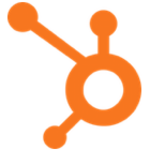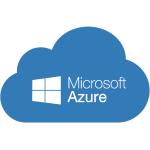Connect HubSpot to Microsoft Azure SQL Database


About HubSpot
Extract data from HubSpot for analytics & reporting. Load data to HubSpot for building a centralized Customer 360 view.
About Microsoft Azure SQL Database
Microsoft Azure is a public cloud computing service designed for building, testing, launching, and managing applications and services via Microsoft-managed data centers. Through its platform-as-a-service (PaaS), software-as-a-service (SaaS), and infrastructure-as-a-service (Iaas) offerings, Microsoft Azure integrates with a wide range of programming languages and tools. In addition to working with Microsoft's proprietary software and systems, Azure is compatible with third-party solutions, including Linux. As an extremely popular cloud services platform, many businesses and enterprises have used Microsoft Azure to migrate their computer systems to the cloud and eliminate the costs and staff requirements needed to maintain physical onsite servers.
Popular Use Cases
Bring all your HubSpot data to Amazon Redshift
Load your HubSpot data to Google BigQuery
ETL all your HubSpot data to Snowflake
Move your HubSpot data to MySQL
HubSpot's End Points
Table of Contents
- Connect your HubSpot data for actionable business insights
- Move your HubSpot data to any destination in minutes
- Integrate.io has the HubSpot data integrations you need
- How Integrate.io customers power growth via HubSpot integration
- Start analyzing your HubSpot data in minutes
- Check out our latest HubSpot-related articles
Connect your HubSpot data for actionable business insights
Using Integrate.io's ETL platform offers the following benefits:
- High levels of data security for the most secure transformations
- Specialization in Amazon Redshift and Snowflake data warehouse solutions
- World-class, award-winning customer support and online resources
Move your HubSpot data to any destination in minutes
- Never again get your customer contact details wrong thanks to real-time updates.
- Vastly reduce the need for manual data entry, which cuts down on instances of human error.
- Keep your finger firmly on the pulse of which marketing and content campaigns are working best for your business.
Integrate.io has the HubSpot data integrations you need
Combining your platforms, social media, and CRM data within a single destination like a data warehouse or data lake allows you to gain greater insights into what drives your business growth.
How Integrate.io customers power growth via HubSpot integration
For example, you can:
- Find out which landing pages across your websites get the most traffic.
- Let your sales team know which products have been discussed most in customer contact forms and why.
- Use HubSpot to manage your email marketing campaigns; then put the results of those side by side with your social media campaigns to compare the impact of both.
- Create a HubSpot form to collect data from your leads, and add that data to a database of all your customer feedback.
- Discover which of your webinars had the most engagement, and use the information to inform new leads about your best services.
Start analyzing your HubSpot data in minutes
Follow the instructions for ETL connections, or use the provided ETL template. Just know that ELT and ETL are not interchangeable. ELT has the advantage in that it only does a single historical data load, and after that only brings across changed data, reducing the strain on your internal systems. Automation of workflows allows you to check for changes regularly as needed.
It's also possible to use the ETL (extract, transform, load, a different data integration process) templates provided by Integrate.io to build a data pipeline that formats data before delivering it to your data warehouse.
Check out our latest HubSpot-related articles
Microsoft Azure SQL Database's End Points
Microsoft Azure Virtual Machines
Microsoft Azure App Services
Microsoft Azure WebApps
Microsoft Azure WebJobs
Microsoft Azure Mobile Engagement Services
Microsoft Azure HockeyApp
Microsoft Azure REST and SDK APIs
Microsoft Azure Table Services
Microsoft Azure Blob Service
Microsoft Azure Queue Service
Microsoft Azure File Service
Microsoft Azure Search Functionality
Microsoft Azure SQL Data Warehouse
Microsoft Azure Messaging Service
Microsoft Azure Automation Features
Integrate HubSpot With Microsoft Azure SQL Database Today
The no-code pipeline platform for
your entire data journey
TRY IT FREE FOR 14-DAYS

Integrates With
Get Started On Your
Data Integration Today
Powers your company decision making
and operational systems with our one-stop
ETL and data integration platforms
TRY IT FREE FOR 14-DAYS










